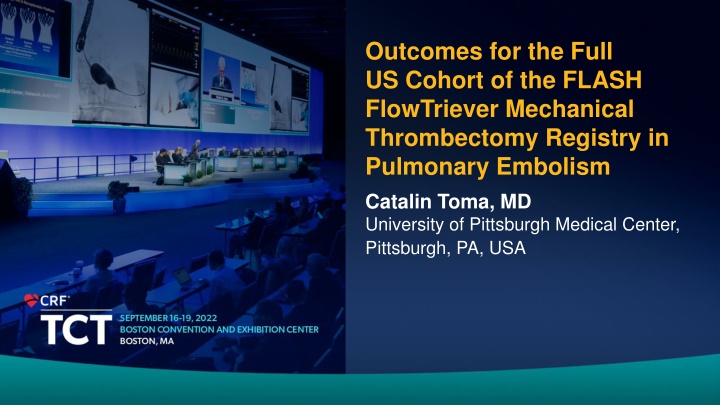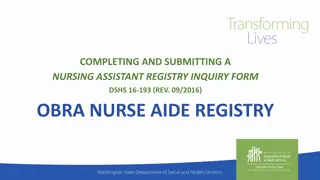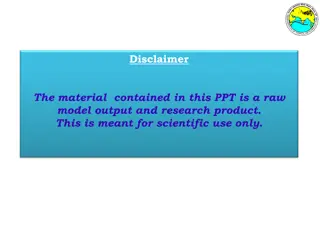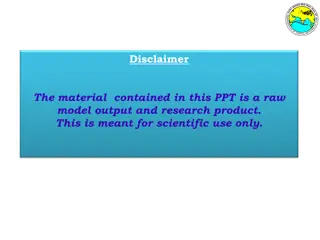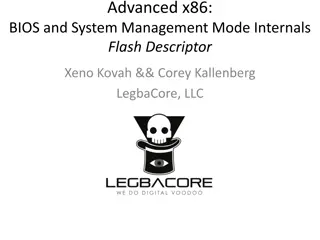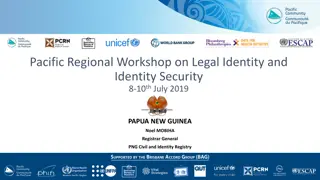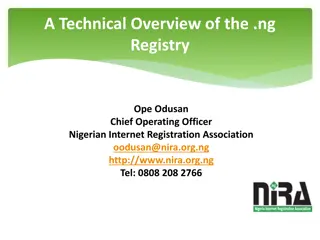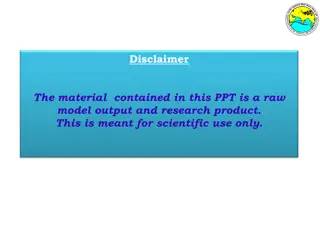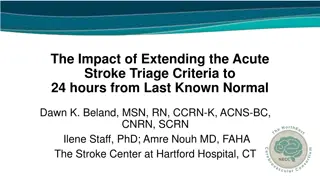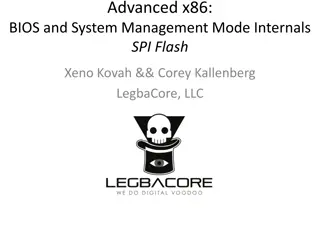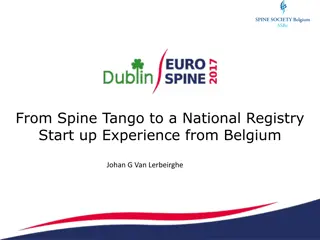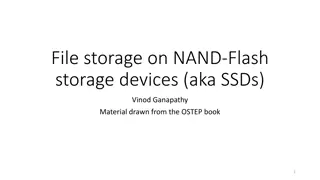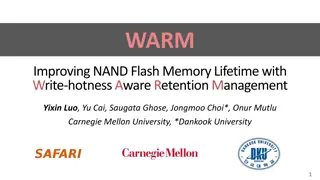Outcomes of FLASH FlowTriever Mechanical Thrombectomy Registry
Evaluation of safety and effectiveness of percutaneous mechanical thrombectomy in pulmonary embolism based on outcomes from the FLASH FlowTriever registry. The registry included 800 patients enrolled at 50 clinical sites in the US, with the intervention designed as a prospective, multicenter, single-arm study. The FlowTriever system, cleared by the US FDA and CE Mark approved, demonstrated successful extraction of PE thrombus without thrombolytics, aiming to improve patient outcomes and reduce mortality rates associated with acute PE.
Download Presentation

Please find below an Image/Link to download the presentation.
The content on the website is provided AS IS for your information and personal use only. It may not be sold, licensed, or shared on other websites without obtaining consent from the author.If you encounter any issues during the download, it is possible that the publisher has removed the file from their server.
You are allowed to download the files provided on this website for personal or commercial use, subject to the condition that they are used lawfully. All files are the property of their respective owners.
The content on the website is provided AS IS for your information and personal use only. It may not be sold, licensed, or shared on other websites without obtaining consent from the author.
E N D
Presentation Transcript
Outcomes for the Full US Cohort of the FLASH FlowTriever Mechanical Thrombectomy Registry in Pulmonary Embolism Catalin Toma, MD University of Pittsburgh Medical Center, Pittsburgh, PA, USA TCT Template Title 30 pt Bold Arial John Doe, MD Subtitle 25 pt Arial Bold Italics
Disclosure Statement of Financial Interest Within the past 12 months, I or my spouse/partner have had a financial interest/arrangement or affiliation with the organization(s) listed below. Affiliation/Financial Relationship Consulting Fees/Honoraria Consulting Fees/Honoraria Company Medtronic Philips Faculty disclosure information can be found on the app
Intervention for Pulmonary Embolism Acute all-cause mortality following PE has remained high (>10%) over 2 decades1,2 Following PE, the 30-day readmission rate is nearly 25%,3 and up to half of patients report persistent dyspnea, exercise intolerance, and/or functional limitations at 3 6 months4 Guidelines suggest considering advanced therapies, including mechanical thrombectomy, when thrombolytics fail or are contraindicated, or hemodynamic deterioration occurs5 Major bleeding risks with thrombolytic-based treatment strategies remain a concern, and their use is limited by corresponding contraindications and consequent ICU monitoring Mechanical thrombectomy can rapidly extract thrombus and relieve RV strain without thrombolytics; additional data on the risk-to-benefit ratio could shift the standard of care 1. 2. 3. Kucher N, et al. Circulation. 2006 (ICOPER) PERT Consortium Quality Database. Presented by E. Secemsky (October 2021) PERT Consortium Quality Database. Presented by R. Lookstein (October 2020) 4. 5. Luijten D, et al. Semin Thromb Hemost. 2022 Konstantinides SV, et al. Eur Heart J. 2020 (ESC Guidelines)
Percutaneous Mechanical Thrombectomy The FlowTriever System extracts PE thrombus by aspiration and/or mechanical modes without the need for thrombolytics Large bore (16 24F) aspiration catheter Nitinol mesh disks for clot disruption The FlowTriever System is 510(k)-cleared by the US FDA and CE Mark approved for the treatment of PE.
FLASH Registry 800 patients enrolled at 50 clinical sites in the United States Between December 2018 and December 2021 Design: Prospective, multicenter, single-arm Methods: Decision to intervene at the discretion of treating physicians/local PERT Objective: Evaluate the safety and effectiveness of the FlowTriever System for treatment of PE in an all-comer patient population through 6 months Primary Endpoint: MAE composite endpoint: Device-related mortality within 48 hours Major bleeding within 48 hours Intraprocedural device- or procedure- related AEs 1 patient later found to be ineligible 799 PE patients treated with the FlowTriever System included in analysis 794 (99.4%) at 48-hour visit* 734 (91.9%) at 30-day visit 558 (69.8%) at 6-month visit + 129 (16.1%) still participating FLASH is the largest prospective interventional study in PE * 36 hours. 15 days. 90 days.
Baseline Characteristics n (%) or mean SD 61.2 14.6 431 (54.0) 143 (17.9) 85 (10.7) 77 (9.7) 512 (65.0) 99 (12.7) 165 (20.7) 65 (8.1) 256 (32.1) n (%) or mean SD 63 (7.9) 611 (76.7) 59 (7.4) 64 (8.0) 1.6 1.1 720 (94.6) 1.5 0.5 319 (40.0) 68 (8.5) 411 (51.5) Characteristic Characteristic Age, years Male sex History of DVT History of PE History of PHTN Concomitant DVT Systolic PA pressure 70 mmHg History of cancer Active cancer Lytics contraindication High-risk PE Intermediate-high risk PE Intermediate-low risk PE Intermediate risk PE (unknown) sPESI Positive biomarker(s)* RV/LV ratio (CT or echo) Saddle PE Unilateral PE Bilateral PE Sample size for each characteristic ranged from 751 to 798 patients. *Elevated BNP and/or troponin.
Procedure Characteristics and Length of Stay Characteristic n (%) or median [IQR] Femoral or common femoral access 794 (99.5) Thrombectomy time, min 43 [29 62] Estimated blood loss, mL 225 [95 400] With FlowSaver blood return 100 [50 200] Without FlowSaver blood return 250 [100 400] Adjunctive PE therapy used 19 (2.4) Post-procedure ECMO use 3 (0.4) Hospital overnights post-procedure 3 [2 5] No overnight ICU stay post-procedure 473 (62.6) Access sample size is the total number of access sites. Sample size for the remaining characteristics ranged from 721 to 799 patients, except for estimated blood loss with FlowSaver (n=79) and without FlowSaver (n=642).
Safety and Mortality Outcomes 1.8% (14/788) 0.0% 1.4% 0.4% Primary MAE Composite Endpoint: 0 device-related deaths: 11 major bleeds*: 3 intraprocedural AEs: 2 clinical deteriorations 1 cardiac injury 0 intraprocedural deaths All-Cause Mortality: 48-hour visit: 0.3% (2/794) 30-day visit: 0.8% (6/734) 6-month visit: 5.0% (28/558) *No intracranial hemorrhages. Not related to the study device. Unknown relationship to the study device.
Immediate Hemodynamic Responses Cardiac Index* 0.29 L/min/m2 (18.9%) Mean PA Pressure -7.6 mmHg (-23.0%) TPVR -1.67 mmHg min/L (-20.1%) 3 45 12 p < 0.0001 40 2.5 10 p < 0.0001 Mean TPVR (mmHg min/L) 35 Mean mPAP (mmHg) Mean CI (L/min/m 2) p < 0.0001 2 8 30 25 1.5 6 20 32.6 1 4 15 1.93 24.9 1.64 10 0.5 2 6.65 5 4.99 0 0 0 Pre-procedure n=683 Post-procedure n=621 Pre-procedure n=176 Post-procedure n=159 Pre-procedure n=779 Post-procedure n=767 p values calculated from paired assessments; mean change reported. *In patients (25.9%) with baseline cardiac index <2.0 L/min/m2 .
Acute Clinical Outcomes Supplemental O2 Heart Rate p < 0.0001 100 120 28.8 p < 0.0001 110 80 Required None (room air) Mean Heart Rate (bpm) p < 0.0001 100 % of Patients 60 89.5 90 40 71.2 101.5 80 20 89.5 70 86.7 10.5 60 0 Pre-procedure n=798 Post-procedure n=779 48-hour n=728 Pre-procedure n=761 87.4% of patients had improvement in supplemental O2 status at 48 hours 48-hour n=712 p values calculated from paired assessments.
Echocardiographic Assessments RV/LV Ratio RV Systolic Pressure RV Function Severely reduced Moderately reduced Mildly reduced Normal p < 0.0001 p < 0.0001 0.5 70 1.6 100 4.7 6.0 0.8 Mean RV Systolic Pressure (mmHg) 29.0 60 20.8 p < 0.0001 p < 0.0001 80 1.2 50 p < 0.0001 Mean RV/LV Ratio % of Patients p < 0.0001 60 34.4 40 37.1 0.8 92.7 30 40 1.23 48.9 0.98 20 38.8 0.80 18.9 0.4 28.9 40.1 20 10 15.0 0 0.0 0 Baseline n=620 48-hour n=212 Latest follow-up n=382 Baseline n=582 48-hour n=187 Latest follow-up n=322 Baseline n=477 48-hour n=130 Latest follow-up n=208 p values calculated from paired assessments; mean latest follow-up ranged from 105.2 116.3 days.
Dyspnea and Quality of Life Measures mMRC Dyspnea Score -2.2 points (-81.9%) PEmb QoL p < 0.0001 p < 0.0001 p < 0.0001 1.1 0.5 70 1.8 100 Median Frequency of Complaints Score 5.1 5.6 8.5 10.5 10.9 60 41.5 18.8 80 17.3 50 23.9 % of Patients 4 3 2 1 0 60 40 25.8 p < 0.0001 25.1 30 40 p < 0.0001 69.9 59.1 20 11.8 12.5 41.3 20 9.7 10 6.3 3.1 12.0 0 0 Baseline n=475 48-hour n=392 30-day n=394 6-month n=282 48-hour n=259 30-day n=196 6-month n=142 p values calculated from paired assessments; score change is mean change from baseline to 6 months.
Readmissions and Long-Term Sequelae All-Cause Readmissions at 30-day visit: Related to PE treatment: Unrelated to PE treatment: 6.2% 1.4% (10/711) 4.8% (34/714) Long-Term Sequelae at 6-month visit: CTEPH: CTED/Post-PE Syndrome: 1.2% (6/490) 2.0% (10/497)
FLASH in Perspective 30-day Readmission 30-day All-Cause Mortality 24.4% 10.2% 10.0% 6.2% 3.2% 0.8% 2 3 1 2 PERT Database (N=5048) AC - Ismayl et al. (N=518) CDT - Ismayl et al. (N=315) FLASH (N=734) FLASH (N=711) PERT Database (N 3400) 1. 2. 3. PERT Consortium Quality Database. Presented by E. Secemsky. (October 2021) Ismayl M, et al. Am J Cardiol. 2022 (Catheter-directed thrombolysis meta-analysis) PERT Consortium Quality Database. Presented by R. Lookstein. (October 2020)
Conclusion FLASH results demonstrate the excellent safety profile of the FlowTriever System with a 1.4% major bleeding rate and 0.4% rate of other MAEs in the largest prospective interventional PE study In a real-world patient population with prevalent baseline predictors of mortality, all-cause mortality was <1% at the 30-day visit Hemodynamics improved on-table, acute vitals and RV strain normalized, and clinical recovery continued through 6 months Data from ongoing PEERLESS RCT will provide important evidence regarding the safety and effectiveness of FlowTriever mechanical thrombectomy compared with catheter-directed thrombolysis
Acknowledgements PRINCIPAL INVESTIGATORS Catalin Toma (Global FLASH PI) Jaber, Wissam Weinberg, Mitchell Bunte, Matthew; Wible, Brandt Stegman, Brian Khandhar, Sameer Gondi, Sreedevi Chambers, Jeffrey Amin, Rohit Leung, Daniel Pollak, Jeffrey Kado, Herman Sarosi, Michael Brown, Michael Castle, Jordan Bhat, Ambarish Savin, Michael PRINCIPAL INVESTIGATORS Bisharat, Mohannad Butros, Paul Koenig, Gerald Zybulewski, Adam; *Olivieri, Brandon, *Beasley, Robert Angel, Wesley; Roberts, Jon Kerrigan, Jimmy SITES SITES Memorial Hospital Jacksonville (Jacksonville, FL) Inova Health System (Fairfax, VA) Henry Ford Health System (Detroit, MI) University of Pittsburgh Medical Center (Pittsburgh, PA) Emory University (Atlanta, GA) Northwell Health (Manhasset, NY) Saint Luke's Hospital of Kansas City (Lee's Summit, MO) CentraCare Heart & Vascular Center (St. Cloud, MN) University of Pennsylvania (Philadelphia, PA) Baptist Health Louisville (Louisville, KY) Metropolitan Heart & Vascular Institute (Minneapolis, MN) Ascension Sacred Heart (Pensacola, FL) Christiana Care Health Services (Newark, DE) Yale University (New Haven, CT) Ascension Providence Hospital (Madison Heights, MI) St. Joseph Mercy (Ypsilanti, MI) Missouri Cardiovascular Specialists (Columbia, MO) Providence Sacred Heart (Spokane, WA) University of Missouri, Columbia (Columbia, MO) Oakland University William Beaumont School of Medicine (Royal Oak, MI) Albany Medical Center (Albany, NY) Mount Sinai Medical Center of Florida (Miami, FL) Methodist Healthcare Foundation (Germantown, TN) Ascension St. Thomas West (Nashville, TN) University Hospitals Cleveland Medical Center (Cleveland, OH) Northwestern University (Chicago, IL) Pima Heart and Vascular (Tucson, AZ) Palmetto General Hospital (Hialeah, FL) UTMC Knoxville (Knoxville, TN) Thomas Jefferson University (Philadelphia, PA) Li, Jun Schimmel, Daniel Balderman, Joshua Patton, Marquand Walker, Chris Gonsalves, Carin Kasmikha, Zaid; *Qaqi, Osama Veerina, Kalyan Dexter, David Lookstein, Robert Lasic, Zoran Mahjoobi, Maziar Paul, Jonathan Tumuluri, Ramagopal Horowitz, James Lee, Justin Leonardi, Robert Patel, Mitul Rothschild, Daniel Tabriz, David Ascension Providence Rochester Hospital (Rochester, MI) Opelousas General (Opelousas, LA) Sentara (Norfolk, VA) Mount Sinai Medical Center (New York, NY) Jamaica Hospital/Lenox Hill (New York, NY) Texoma Medical Center (Denison, TX) University of Chicago (Chicago, IL) Aurora St. Luke s Medical Center (Milwaukee, WI) NYU Langone Medical Center (New York, NY) Sarasota Memorial (Sarasota, FL) Lexington Medical Center (Lexington, KY) Valley Health (Ridgewood, NJ) Norton Healthcare (Louisville, KY) Rush University Medical Center (Chicago, IL) Siskin, Gary Beam, Daren/Stewart, Lauren Kathryn Brancheau, Daniel Ahmed, Mustafa Rosenberg, Michael; Fanola, Christina Elmasri, Fakhir Zlotnik, David Indiana University School of Medicine (Indianapolis, IN) Ascension Genesys Hospital (Grand Blanc, MI) UAB Division of Cardiovascular Disease (Birmingham, AL) University of Minnesota (Minneapolis, MN) Lakeland Vascular Institute (Lakeland, FL) SUNY, The University at Buffalo (Buffalo, NY) *Past Principal Investigators
